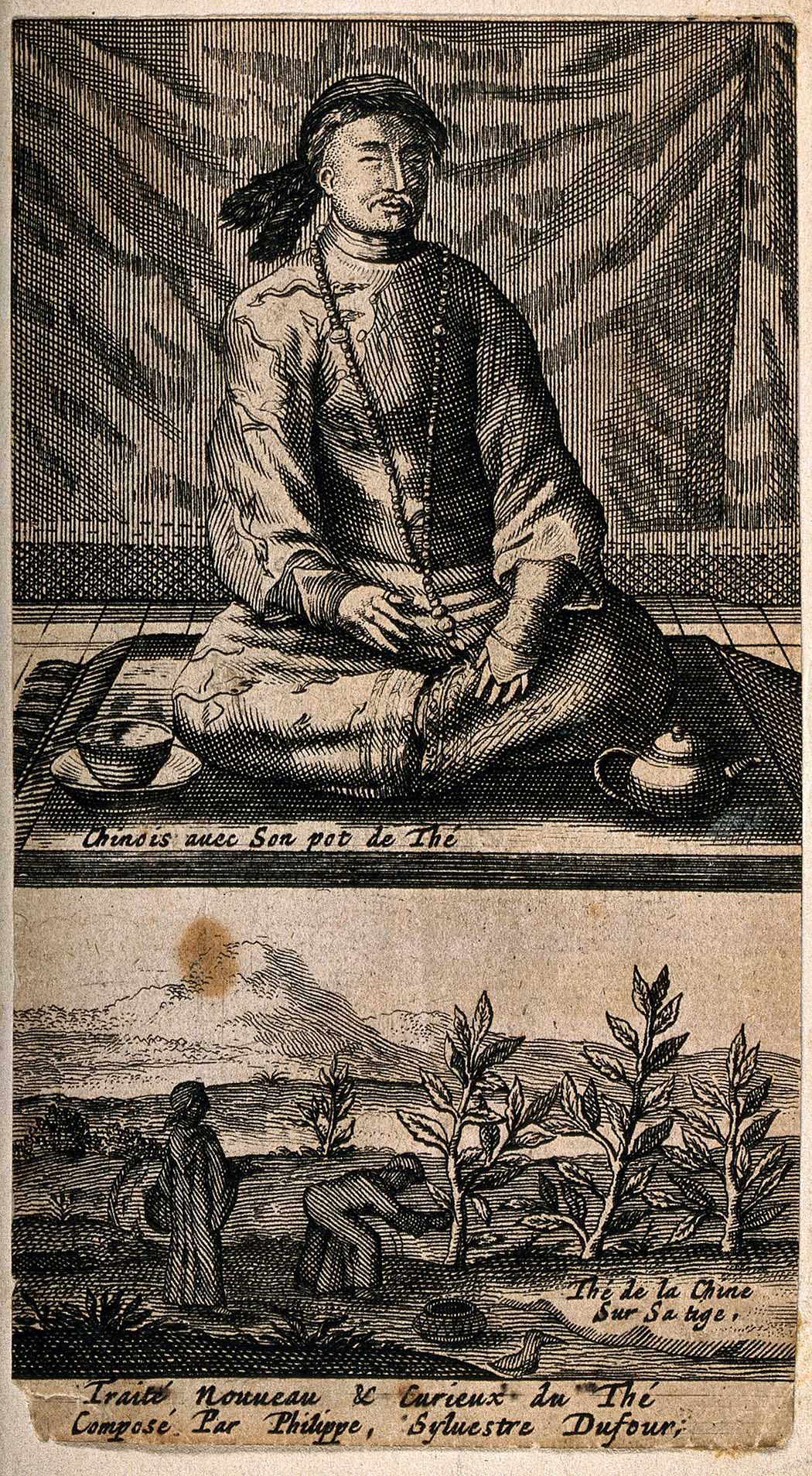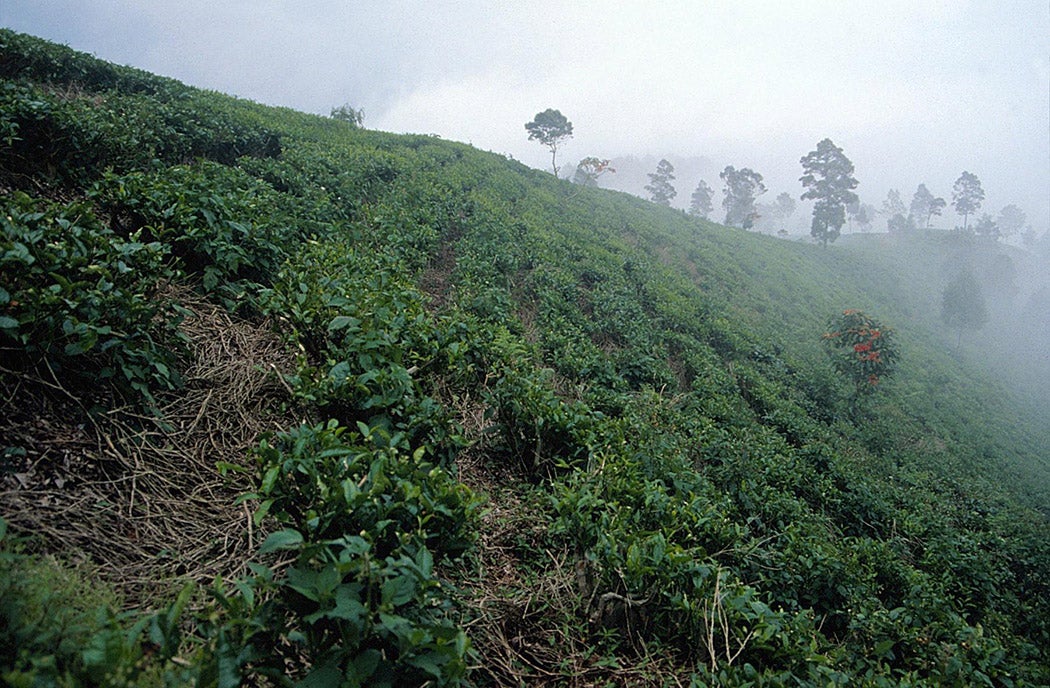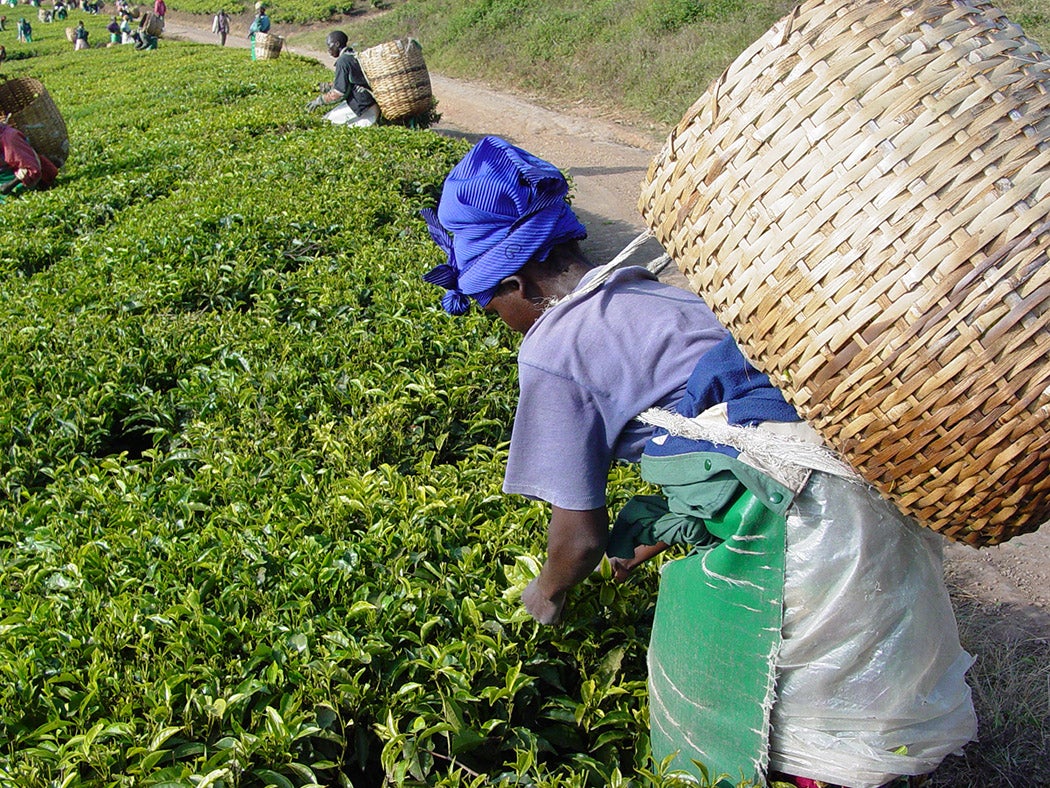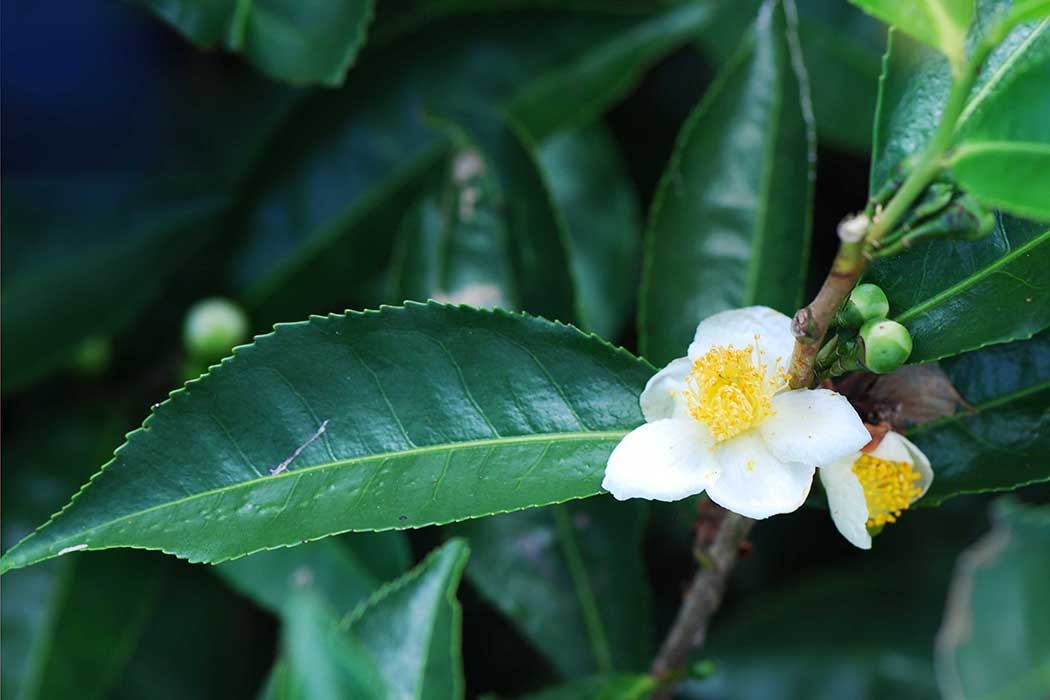In late fall and early winter, while many plants in the US are wilting, Camellia sinensis is flowering. Its glossy evergreen leaves give way to bright white petals with yellow centers. This plant, valued both for its beauty and resilience, is also known as the source of the second-most consumed beverage in the world: tea.
Legend has it that around 2737 BCE, then-Emperor of China Shen Nong instructed his subjects to boil their drinking water to maintain health. As archaeologist and historian Solomon Bard describes, while water was being boiled in the emperor’s garden, Camellia sinensis leaves blew into the pot, and Shen Nong drank the resulting beverage. With his first sip, he yelled, “t’sa,” meaning “godlike,” and thus the name “cha” was adopted for the drink.
Tea cultivation, however, didn’t begin in China until around 350 CE, and in 780 CE, Lu Yu published one of the first books about tea, which included descriptions of tea leaf shapes and tea ceremonies. In the early twelfth century, merchants brought tea to the Muslim world, where it was “consumed in place of wine and other forbidden (haram) stimulants and beverages,” writes historian Marc Jason Gilbert. It would take almost another 500 years for tea to become a global superdrink.

Black, oolong, white, yellow, pu’er, and green teas all come from Camellia sinensis. As geographer Susan M. Walcott explains, when Camellia sinensis leaves oxidize, they become black tea; oolong leaves are partially oxidized, and green tea leaves remain unoxidized. Other types of herbal drinks, such as rooibos, aren’t technically “tea,” because they aren’t derived from Camellia sinensis. Based on the legend of Shen Nong, unoxidized green tea was likely the first tea consumed. In her book Tea: A Global History, historian Helen Saberi explains that oxidizing tea likely became popular as trade increased and producers needed to find a way to keep tea fresh—thus, the leaves were fermented.

The story of Camellia sinensis, like the story of many plants, has a storied colonial past. In the nineteenth century, the British were addicted to tea and could only get tea from China. Bard writes that tea was one of the underlying causes of the Opium Wars (1839–1860).
“British interests in the nineteenth century kept the opium supply line open and the manufacture of opium in India solvent in order to pay for China’s tea,” Bard writes. “Britain went to war with China to protect those interests. In this sense the war was also the Tea War.”
When British colonizers discovered that Camellia sinensis was indigenous to Assam, India, they built tea plantations to hydrate growing demand in England. Initially, the British imported Chinese tea plants to Assam, and even brought in Chinese laborers to farm the “authentic” tea, writes historian Jayeeta Sharma. However, many of the Chinese laborers refused to work beyond the scope of the job they were hired for, such as clearing the forest for tea cultivation, and British colonizers turned instead to the Nagas, the Indigenous people of Upper Assam.
The colonizers soon discovered that the Nagas were not dependable laborers in the exploitative plantation system they had created, and Chinese tea plants were struggling to thrive in Assam, writes Sharma. Consequently, the British started planting native Assam varieties and built their tea enterprise on the backs of indentured Central Indian laborers. For the British, tea quickly became appropriated as part of their national identity.
As Victorian literature scholar Julie E. Fromer writes,
Discovering tea growing wild within the bounds of the British Empire offered a way out of the conundrum of basing national identity upon a product imported from foreign sources—essentially domesticating the potentially troubling exotic origins of the national beverage.
By the late 1880s, the British were importing more tea from their plantations in India and Ceylon than from China.
As tea became increasingly popular in the Western world, tea culture became a point of pride for countries where tea has been a part of society for millennia. In nineteenth-century Japan, as Rebecca Corbett writes, “[the government], intellectuals, and tea masters sought to tell foreign and domestic audiences alike…that the objects used in tea culture could be valued as art in the same way that Western paintings were.”
Weekly Newsletter
Walcott explains that the first major tea planting effort in the United States took place on a South Carolina plantation in 1848. The United States Department of Agriculture conducted experiments to grow tea on U.S. soil and even encouraged “backyard tea cultivation in the South to promote self-sufficient households.” A September 1849 article in Scientific American gives instructions for preparing the drink like “the usual method in China,” noting that “a variety of British plants have been proposed as substitutes for Chinese tea, but they do not possess the quickly diffusible stimulus of real tea.” The “British” tea, here, of course, is actually Assam tea.

The effects of British colonial rule in India linger. In 2015, a BBC investigation revealed that children were working on tea plantations, and that “[nine] out of 10 patients from [Assam] tea plantations are malnourished.” A 2019 Oxfam report states that
little has changed for workers since the 1840s…Between 1870 and 1900, it is estimated that up to 750,000 women, men and children were brought to Assam. In 1877, children made up one-third of the workforce and by 1930, they accounted for half of the workforce.
According to the International Institute for Sustainable Development (IISD)t, the tea industry currently employs millions of workers worldwide, including approximately 80 million people in China. In 2023, global tea consumption reached a record high, totaling over 7 billion kilograms, with further increases expected. But Camellia sinensis is susceptible to the changing climate, notes the IISD, and tea “yields are projected to decrease by 5 percent in China, 14 percent in Sri Lanka, and 25 percent in Kenya by 2050.” Moreover, intensive mono-cropping has depleted soil nutrients, exacerbating the productivity issue. In response to these challenges, tea planters are implementing innovative strategies. In Tanzania, growers are diversifying their crops by planting coffee and fruit trees alongside tea plants to enhance soil quality. In Assam, tea growers are adapting to erosion threats “by constructing anti-erosion riverbanks,” the IISD reports.
For millennia, tea has been a source of spiritual and cultural value to many groups around the world. Despite its widespread consumption and cultural importance, the tea industry grapples with complex socio-economic and environmental issues. Camellia sinensis is now a part of our everyday lives, but the conditions on tea plantations continue to raise questions about how the economic value of a plant can impact the lives of those working to produce it. The Plant Humanities Initiative at Dumbarton Oaks seeks to explore the interconnectedness of plants and people.








